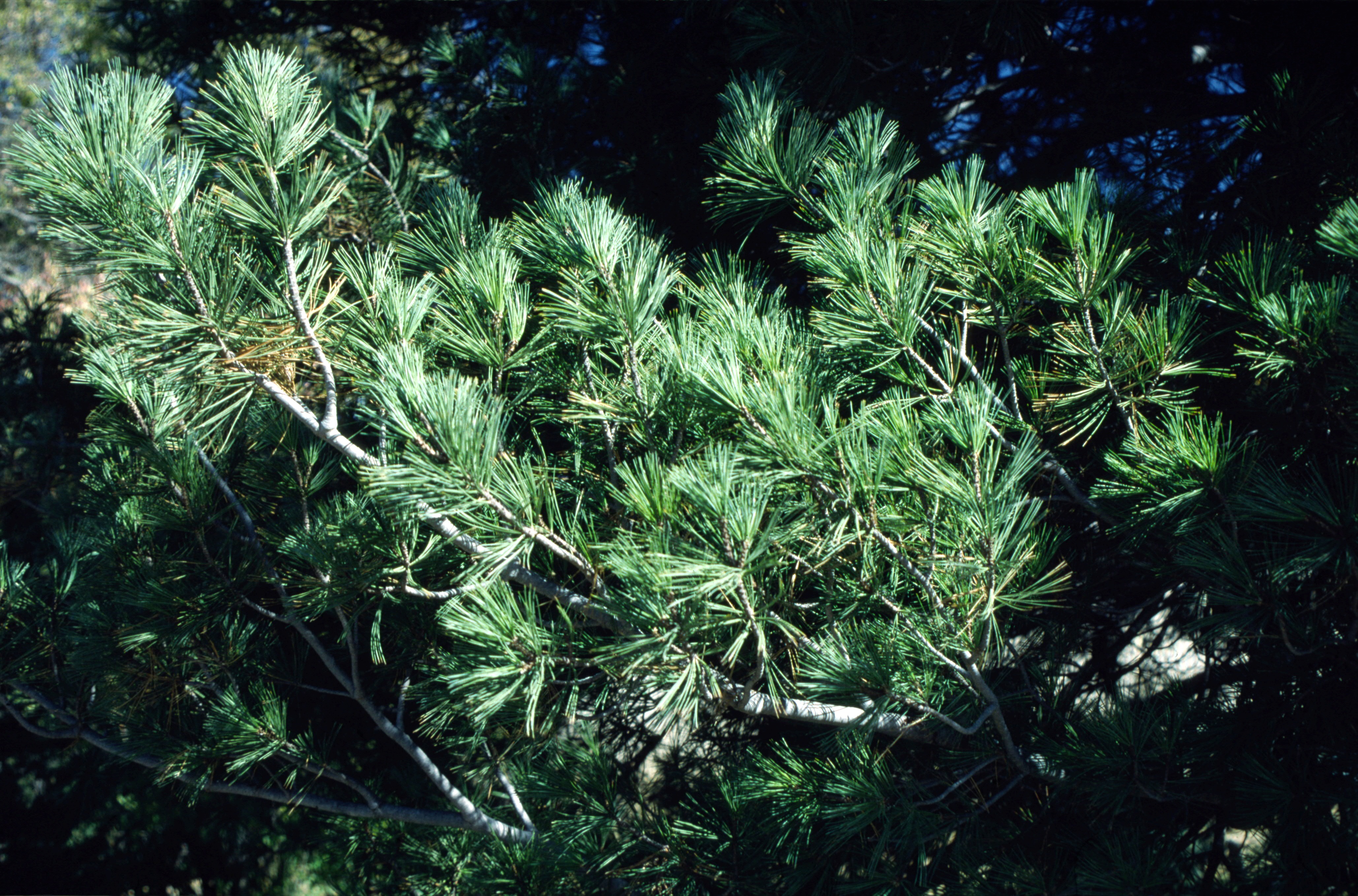Pine, Limber
Pinus flexilis, Coniferous
Limber pine is a medium-sized evergreen native to the Rocky Mountains from Canada to New Mexico where it’s typically found at elevations of 5,000 to 12,000 feet, often reaching the tree line. A few disjunct stands reach out on to the western High Plains including the Pine Bluffs area of western Kimball County, making it one of only two pine species native to the state, the other being Ponderosa pine.

Where To Grow

Size at Maturity
| Tree Height | Tree Spread |
| 35-60' | 25-40' |
Tree Characteristics
Limber pine is quite variable in growth. On favorable sites, it will grow 40-60’ tall with a pyramidal shape maturing to a more rounded form with age. However, in exposed high elevations near tree line, it is often dwarf and shrubby, while on the high plains it’s often stunted by poor soil and lack of moisture. The tree has highly flexible branches that are able to withstand heavy snow and wind loads without breaking. It’s soft, blue-green needles are up to 3.5” long and in bundles of five, revealing its relationship to other white pines. Its light brown, distinctive cones are 6-8” long, thick-scaled and very resinous.
Wildlife Benefits
The large, wingless seeds of limber pine have high energy content and provide critical food for rodents and a wide-variety of birds, many of which cache the seeds for later use. Squirrels, flickers, and mountain bluebirds often nest in the trees.
Additional Considerations
Limber pine is generally considered a low-maintenance tree with few problems. Its most dangerous enemy is white pine blister rust which is a bark disease that is often fatal. Currants and gooseberries are the alternate host for the disease and should not be planted in areas where limber pines are under attack.
Related species
Limber pine is part of the white pine group and several related species are grown in Nebraska (see summary under eastern white pine).
- Southwestern white pine (Pinus strobiformis) is perhaps the most interchangeable cousin. It’s a southwest US native of lower elevations growing up to 50’ tall and 30’ wide. It’s more heat tolerant than limber pine.
- A variety called ‘Vanderwolf’s Pyramid’ limber pine is fairly common in the nursery trade and is often sold and planted in Nebraska. However, it’s probably not a true limber pine and is actually derived from other species, possibly Pinus strobiformis or Pinus reflexa. It is not as cold hardy as limber pine and sometimes suffers winter burn in Nebraska.
Interesting Facts
Both the common and scientific names are derived from its highly flexible branches which evolved to withstand heavy snow and wind loads.


